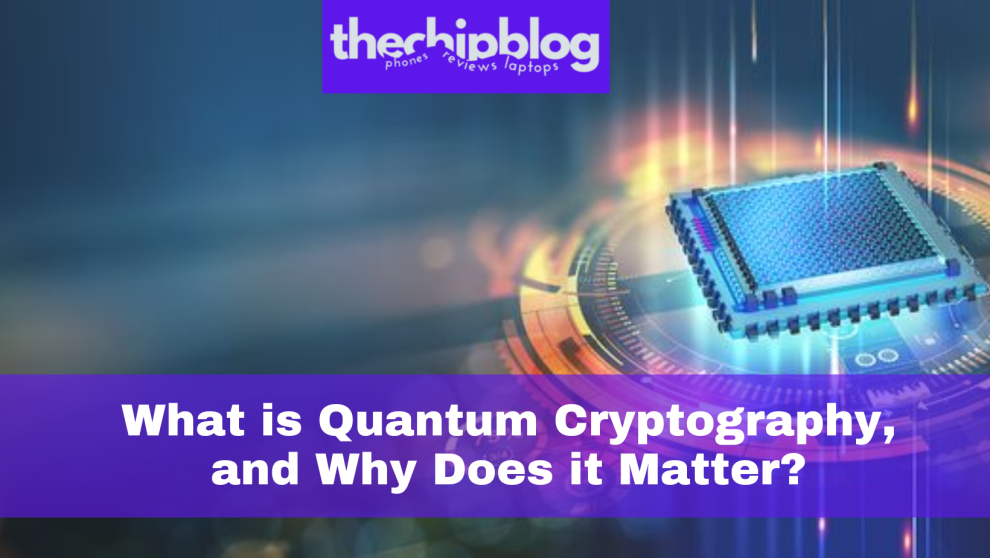Quantum cryptography, often referred to as quantum key distribution (QKD), is a groundbreaking technology that harnesses the bizarre principles of quantum mechanics to create an unbreakable system for exchanging secret keys. Unlike classical cryptography, which relies on mathematical algorithms and computational complexity, quantum cryptography leverages the inherent properties of quantum particles, such as photons, to transmit information in a fundamentally secure manner.
The significance of quantum cryptography lies in its ability to detect eavesdropping attempts. According to the laws of quantum mechanics, any attempt to intercept or measure a quantum particle inevitably disturbs its state, leaving an unmistakable trace. This remarkable feature ensures that any unauthorized access to the encrypted data is immediately detected, rendering the information unusable and preventing potential breaches.
As the world inches closer to the realization of practical quantum computers, the urgency to adopt quantum-resistant cryptographic solutions becomes increasingly apparent. Traditional encryption methods, which rely on the difficulty of factoring large numbers or solving complex mathematical problems, will be rendered obsolete by the immense computational power of quantum machines. Quantum cryptography offers a viable solution, providing a future-proof approach to secure communication in the face of this looming quantum supremacy.
How Does Quantum Cryptography Work?

At the heart of quantum cryptography lies a fascinating phenomenon known as the “no-cloning theorem.” This principle dictates that it is impossible to create an identical copy of an unknown quantum state without disturbing the original. This fundamental property forms the basis for the secure exchange of cryptographic keys in quantum cryptography.
The process typically involves two parties, commonly referred to as Alice and Bob, who wish to establish a secure communication channel. They achieve this by transmitting quantum particles, such as photons, over a dedicated quantum channel, often a fiber-optic cable or free-space link. These particles are carefully prepared in specific quantum states, representing the encoded cryptographic key.
During transmission, the quantum particles are subject to the laws of quantum mechanics, which dictate that any attempt to measure or intercept them will inevitably alter their state. This disturbance is detected by Alice and Bob, who can then discard the compromised portion of the key and generate a new one.
Once the secure key has been established, Alice and Bob can use it to encrypt and decrypt their subsequent communications using conventional cryptographic algorithms, such as the Advanced Encryption Standard (AES). However, the true strength of quantum cryptography lies in the ability to detect eavesdropping attempts during the key exchange process, ensuring that the shared key remains secure and confidential.
Challenges and Limitations of Quantum Cryptography
Despite its revolutionary potential, quantum cryptography is not without its challenges and limitations. One of the primary hurdles is the distance limitation imposed by the fragile nature of quantum states. Quantum particles are susceptible to environmental factors, such as noise and loss, which can disrupt their delicate quantum states over long distances. This constraint has led researchers to explore techniques like quantum repeaters and trusted node networks to extend the range of quantum cryptography.
Another challenge lies in the scalability and practical implementation of quantum cryptography systems. While the underlying principles are well-established, building large-scale, robust, and cost-effective quantum networks remains a formidable engineering challenge. Researchers are actively working on developing efficient quantum sources, detectors, and interfaces to overcome these obstacles and pave the way for widespread adoption.
Furthermore, quantum cryptography is not a panacea for all security concerns. It primarily addresses the confidentiality aspect of secure communication, ensuring that the exchanged keys remain secret. However, it does not inherently address other crucial aspects of cybersecurity, such as authentication, integrity, and non-repudiation. These aspects still rely on traditional cryptographic techniques, which may become vulnerable to quantum attacks in the future.
The Future of Quantum Cryptography: Opportunities and Applications
Despite the challenges, the future of quantum cryptography holds immense promise and potential applications across various sectors. One of the most significant applications lies in the realm of secure communication for critical infrastructure, such as government and military networks, financial institutions, and healthcare systems. The unbreakable nature of quantum cryptography can provide an unprecedented level of security, safeguarding sensitive data from prying eyes and malicious actors.
Moreover, quantum cryptography can play a pivotal role in the development of secure quantum networks and quantum computing infrastructure. As quantum technologies continue to advance, the need for secure communication channels between quantum devices will become increasingly important. Quantum cryptography can serve as the foundation for these secure quantum networks, enabling the seamless exchange of quantum information and facilitating the realization of groundbreaking applications in areas like quantum computing, quantum sensing, and quantum simulation.
Beyond secure communication, quantum cryptography also holds potential in other domains, such as quantum random number generation and quantum key distribution for blockchain and cryptocurrency applications. The inherent randomness and unpredictability of quantum processes can be harnessed to generate truly random numbers, which are crucial for various cryptographic protocols and secure applications.
Challenges and Opportunities in the Quantum Era

As the world inches closer to the quantum era, the future of cryptography stands at a critical juncture. While quantum cryptography offers a promising solution to the looming threat of quantum computing, its widespread adoption and integration into existing infrastructures present significant challenges.
One of the primary hurdles lies in the development of comprehensive quantum-resistant cryptographic standards and protocols. Although quantum cryptography addresses the key exchange aspect, it does not provide a complete solution for all aspects of secure communication. Robust quantum-resistant algorithms and protocols must be developed and adopted to ensure the confidentiality, integrity, and authenticity of data in the quantum era.
Furthermore, the transition to quantum-resistant cryptography will require a coordinated effort among governments, industries, and research institutions. Existing systems and infrastructures must be updated and upgraded to incorporate quantum-resistant solutions, a process that will likely span years and require significant resources and investments.
Despite these challenges, the potential benefits of quantum cryptography and quantum-resistant cryptography are too significant to ignore. As quantum technologies continue to advance, they hold the promise of revolutionizing various industries, from finance and healthcare to national security and scientific research. Embracing these emerging technologies and fostering a culture of innovation and collaboration will be crucial in navigating the complexities of the quantum era.
Conclusion: Embracing the Quantum Future
The future of cryptography is a captivating tale of innovation, disruption, and resilience. As we stand at the precipice of the quantum era, the urgency to develop and adopt quantum-resistant solutions becomes increasingly apparent. Quantum cryptography emerges as a beacon of hope, offering an unbreakable foundation for secure communication in the face of quantum supremacy.
While the path ahead is riddled with challenges and uncertainties, the potential rewards are immense. By embracing the principles of quantum mechanics and harnessing the power of quantum technologies, we can unlock new frontiers in secure communication, data protection, and technological advancement.
The future of quantum cryptography lies not only in its ability to safeguard our digital assets but also in its capacity to catalyze breakthroughs across various domains. From enabling secure quantum networks and facilitating groundbreaking scientific discoveries to fortifying critical infrastructures and protecting sensitive data, quantum cryptography holds the keys to unlocking a future where security and innovation coexist harmoniously.
As we navigate this uncharted territory, it is incumbent upon us to foster collaboration, invest in research and development, and cultivate a deeper understanding of the quantum realm. By doing so, we can pave the way for a future where the mysteries of quantum mechanics are not only unraveled but also harnessed to create a more secure, connected, and technologically advanced world.
The quantum revolution is upon us, and the future of cryptography lies at its heart. Embrace the enigma, unlock the potential, and secure our digital future with the power of quantum cryptography.















Add Comment